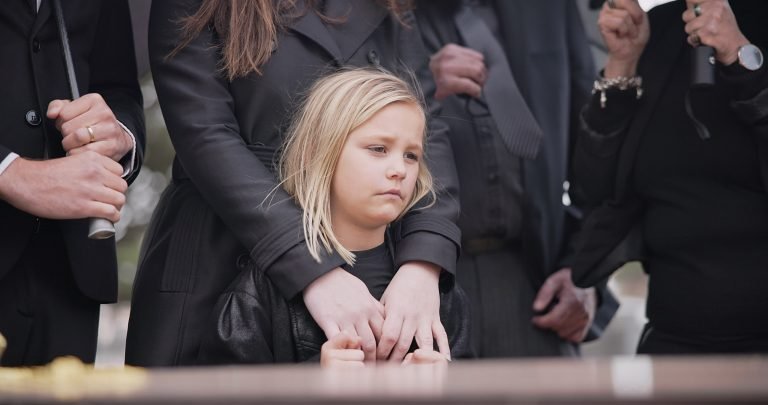Shaping Hope Through Play: A Play Therapist’s Approach to Post-Traumatic Healing

As play therapists, we have the profound privilege of guiding children through the aftermath of trauma, fostering resilience, and instilling hope. Our unique role equips us to address one of the most subtle yet potent aftermaths of trauma: post-traumatic play. This specialized form of therapy is not just about play—it’s about healing, understanding, and rewriting narratives.
Decoding Post-Traumatic Play
Post-traumatic play is a language in its own right, a method through which children articulate their deepest wounds and fears. This form of play is characterized by repetition, a recursive loop where children re-enact and relive traumatic events. While this can be a natural part of the healing process, allowing children to express and externalize their trauma, it can also become a kind of echo chamber that amplifies their sense of entrapment within the traumatic experience. Our role as therapists is to decode this language of play, to understand its symbols and patterns, and to gently guide the child towards rewriting their internal script.
This phenomenon often reveals itself through specific themes or storylines that surface in the child’s play. They may recreate scenes that mirror their trauma or involve characters that represent their aggressors or themselves. The scenes are frequently infused with a sense of danger, fear, or sadness. The task for us as therapists is not only to recognize these themes but to understand their functions. We must ask ourselves, “What purpose does this serve for the child? How is this narrative protecting them, or how is it holding them back?”
By decoding the messages within post-traumatic play, we can begin to dismantle the harmful loops of re-enactment. This is a delicate operation, one that involves careful observation, attunement to the child’s emotional state, and the strategic introduction of new elements into their play. Our aim is to guide children towards alternative narratives that do not deny their past but instead offer new pathways for understanding and growth. We must become adept at reading between the lines of their play, uncovering the hidden meanings, and responding with interventions that introduce new themes of empowerment and resilience.
The Role of Directiveness in Play Therapy
Navigating the delicate balance of directiveness within play therapy is akin to a skilled gardener knowing just when to prune and when to plant. It is not about imposing our own narratives or will upon the child’s play, but rather about providing scaffolding that allows for the construction of new outcomes. As we introduce alternatives into the repetitive re-enactments of trauma, we hold a lantern up to the possibility of different endings, shining a light on paths that lead away from darkness and toward the possibility of healing and recovery.
Intruding with Care
To ‘intrude’ in play therapy is to enter the child’s world with the utmost respect and sensitivity. It requires an acute awareness of timing and context, ensuring that our insertions are both meaningful and measured. Whether it’s through the addition of a new character that brings comfort, or an unforeseen plot twist that alters the course of the narrative, our goal is to integrate these elements seamlessly into the play. This tactful insertion can redirect the storyline, providing the child with a renewed sense of agency and an inkling that their story may unfold differently than they had anticipated.
Building New Worlds
The new worlds we endeavor to co-create with children in therapy sessions are not merely escapist fantasies; they are carefully cultivated spaces where hope can be seeded and grown. Within these worlds, children are free to explore the “what ifs” and “could bes,” away from the “what was.” Each block stacked, every drawing rendered, and all characters brought to life in the playroom become the building materials for these new worlds. They are infused with the child’s creativity, guided by our supportive presence, and designed to demonstrate that change is possible.. As we guide the child in constructing these new realities, we witness the burgeoning belief that they can indeed author a story that moves beyond the shadow of their trauma and into the light of new beginnings.
Asking the Right Questions
In the intimate dance of play therapy, the questions we pose are the gentle steps that lead the child through the choreography of healing. Thoughtful questions, posed at the right moment, can lift the veil of solitude that trauma often weaves, allowing children to glimpse a landscape dotted with support and safety. By asking, “What would happen if we build in some help and a safe place for you in the play?” we are not merely suggesting an alternative scenario; we are extending an invitation to the child to imagine a world not confined by their fears but defined by the presence of allies and havens.
Evoking Emotional Insight
The artistry of our questions lies in their ability to reach beyond the surface and stir the deeper waters of the child’s emotions. When we ask them to consider the presence of a safe place in their play, we are not passively watching the unfolding scene. Instead, we are actively engaging the child’s ability to conceptualize security, to feel it, and to recognize it as something real and attainable. It is an experiential dialogue, where the child learns to identify and name the emotions that emerge, contrasting the newfound feelings of safety with the shadows of past vulnerabilities.
Encouraging Reflection
Our role requires us to be the mirror in which children can view their experiences from a new perspective. Through our dialogue, we encourage them to look back not to dwell in the past but to recognize their journey from there to here. Questions that invite comparison between ‘then’ and ‘now’ encourage the child to see their growth, to understand that the fear they once felt does not hold the same power over their present. This reflective process is crucial—it helps to anchor the healing in reality, providing a foundation upon which the child can build a narrative of overcoming and resilience.
By weaving the right questions into the fabric of therapeutic play, we are not just facilitating a conversation; we are co-creating a story of empowerment with the child. Each question is a brushstroke in a larger picture, one that gradually shifts from the monochromatic tones of trauma to a vivid portrait brimming with the colors of healing and hope.
The External Image of Hope
In the heart of play therapy, amidst the echoes of past traumas, we as therapists have the profound task of creating beacons of hope for young minds to follow. These beacons—or external images of hope—are vital in the healing process. They are not mere figments of playful imagination but serve as symbols of resilience and possibility. Our objective is to introduce these images into the therapeutic play space, where they can shine as guiding lights, showing a path forward that is bright and filled with potential.
Imprinting New Narratives
Introducing symbols of hope into the child’s narrative does more than change the direction of their play—it begins the process of imprinting new, healthier narratives into their psyche. These symbols could be as simple as a toy figure that offers protection or as nuanced as a story’s outcome that diverges from the original, traumatic ending. They act as mental anchors, providing stability and a reference point that a child can return to when they feel adrift in their internal sea of confusion and pain.
When a child grips tightly to these anchors, they are not just holding on to objects or ideas, but to a rewritten script of their life’s story. These symbols become part of their mental tapestry, each thread representing a leap from victimhood to agency, from darkness into light. They are more than just tools; they are gifts of transformation, wrapped in the guise of play.
Cultivating Internal Focus
As children engage with these symbols, a remarkable metamorphosis begins. The external images of hope slowly seep deeper, taking root within the child’s internal world. With time and nurturing, these symbols of safety, strength, and support become internalized. The child starts to focus not on the symbol itself but on what it represents—their ability to survive, to thrive, and to find joy again.
This shift from external to internal focus is pivotal. It signifies that the child has begun to carry within themselves the seeds of healing. They no longer look solely to the therapist or the play for assurance; they start to find it within their own narratives of strength and recovery. These internalized symbols of hope become integrated into their sense of self, influencing their self-perception and their outlook on life.
In this way, the play therapist facilitates a journey not just back to normalcy, but toward a new horizon of self-empowerment. By nurturing these internal symbols of hope, we guide children toward a future where their trauma is not forgotten, but rather becomes one part of a larger, more hopeful story they can tell about themselves.
The Limitations of Re-experiencing Trauma
Delving into the intricate layers of a child’s psyche reveals the delicate balance required when addressing post-traumatic scenarios. When a child revisits their traumatic experiences through play, it can be a part of their instinctual effort to process difficult memories. However, without therapeutic guidance, this replay can become a looping echo that does little to alleviate their burden. Our aim is to gently disrupt this loop, transforming the cycle of replay into a journey of healing.
Understanding Looping in Post-Traumatic Play
Within the realm of post-traumatic play, looping emerges as a significant phenomenon, where the same outcome or scenario is repetitively enacted by the child. This repetitive pattern serves as a poignant echo of the trauma they have endured, reflecting their attempts to make sense of and exert control over their experiences. Looping can manifest in various forms, whether it be reenacting a distressing event, embodying a role of powerlessness, or perpetually seeking resolution in a narrative that remains unresolved. As therapists, recognizing and engaging with these loops requires delicacy and insight, as they serve as windows into the child’s inner world, offering glimpses of their unspoken fears, desires, and coping mechanisms. By sensitively navigating these repetitive motifs, we create opportunities for healing and growth, guiding the child towards a narrative of resilience and empowerment.
Processing Over Replaying
The crucial transition from replaying to processing is a transformative one. Processing trauma within play therapy involves more than recalling events; it’s about facilitating the child’s understanding and emotional integration. This approach encourages the child to move beyond mere re-enactment, guiding them towards a narrative where the trauma is acknowledged and addressed, but not relived.
The Therapist’s Role in Processing
Our role as therapists is akin to that of a compassionate navigator, guiding the child through the stormy seas of their trauma with a steady hand. We introduce new symbols and allies into their play, elements that represent safety, hope, and resilience. With each carefully framed question and introduced concept, we encourage the child to engage with their story from a place of strength and safety, facilitating a process of emotional insight and transformation.
Ethical Interventions in Play Therapy
In the delicate realm of play therapy, ethical considerations are not merely guidelines; they are the very scaffolding upon which the therapeutic journey unfolds. As stewards of healing, it is incumbent upon us to navigate this terrain with unwavering integrity and a steadfast commitment to the well-being of the child entrusted to our care.
Our interventions must always emanate from a place of genuine concern for the child’s welfare, never as a shield to protect ourselves from the discomfort inherent in confronting their trauma. It is imperative that we steel ourselves to confront the rawness of their experiences if we are to expect them to traverse the path of healing alongside us.
Self-Reflection for Therapists
Central to our ethical mandate is the continuous examination of our own emotional landscape. We must vigilantly scrutinize our feelings and reactions, recognizing that any overwhelming response may signal an unmet need within ourselves rather than a reflection of the child’s journey. Should a particular play theme stir within us a tempest of emotions, it is incumbent upon us to seek supervision or engage in personal therapy. By doing so, we ensure that our interventions remain anchored in the child’s best interests, untainted by our own unresolved issues.
Honoring the Child’s Pace
In the sacred space of play therapy, time is not measured in minutes and hours but in the rhythm of the child’s heartbeat. Every intervention we undertake must bow before the altar of the child’s pace and readiness. We must resist the impulse to hasten the process simply to assuage our discomfort, instead embracing the role of silent companions, walking alongside the child as they navigate the labyrinth of their emotions. It is through patience and empathy that we cultivate the fertile soil in which healing takes root and flourishes.
As we embark on this noble endeavor of guiding young survivors through the labyrinthine corridors of post-traumatic play, we transcend the mere role of therapists; we become architects of hope. With each thoughtful intervention, we lay down stepping stones that bridge the chasm between the darkness of trauma and the radiance of healing. In the tapestry of a child’s life, every thread of hope we weave today becomes the fabric of their resilience tomorrow. Let us, therefore, embark on this journey with hearts brimming with compassion, spirits fortified with courage, and an unshakeable belief in the transformative power of play.














